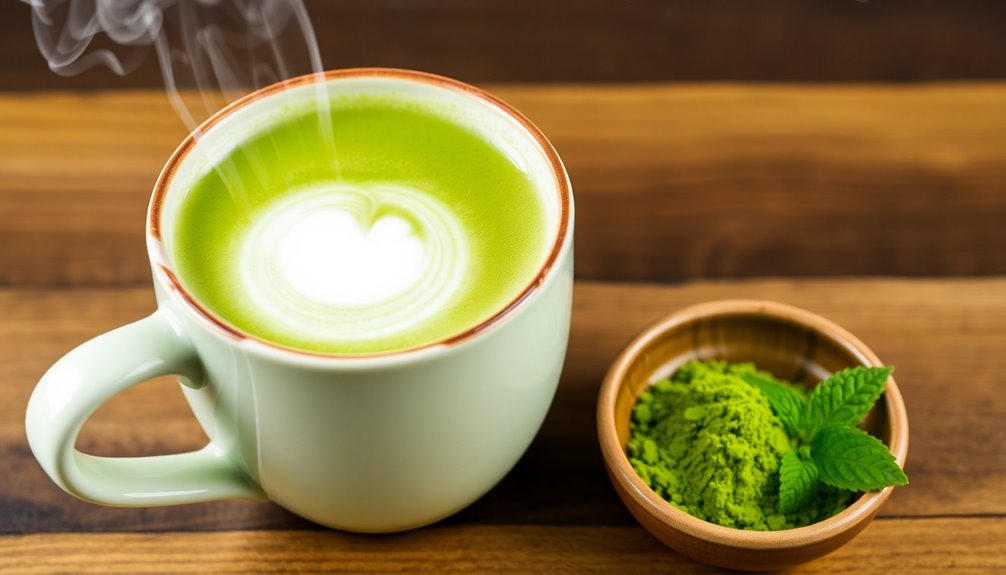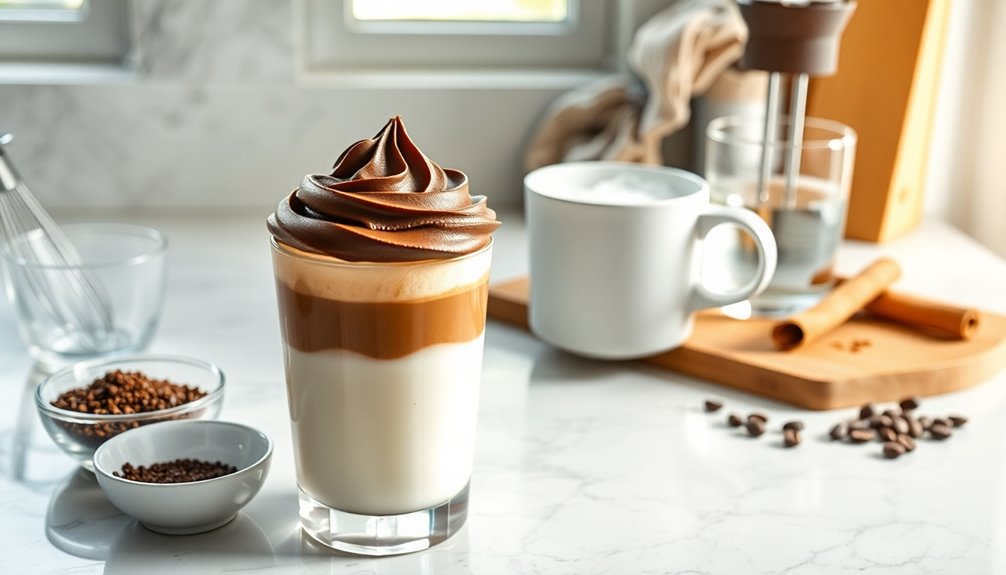Matcha's origins date back to ancient China, but it was the Japanese who truly elevated this vibrant green tea into a global superfood. By sifting the powder, whisking it with hot water, and frothing milk, you can easily craft a matcha latte bursting with health benefits. The caffeine and L-theanine provide a calm, focused energy boost, while the antioxidants support overall wellness. Customize your latte with dairy or plant-based milks, and sweeten it to your taste. Portion control and using high-quality matcha are key to reaping the full rewards. There's much more to discover about this remarkable powdered tea.
History

Matcha's roots trace back to the Tang Dynasty in China, where it first emerged before making its way to Japan.
Over the 12th century, Japanese cultivators began growing shade-loving tea plants, boosting the leaves' chlorophyll and flavor. Zen Buddhist monks then popularized matcha, using it to promote alertness and calmness during meditation.
This paved the way for the Japanese tea ceremony, "chanoyu," which elevated matcha to a revered cultural symbol in the 15th century.
In recent decades, matcha has gained global recognition as a superfood due to its unique health benefits and flavor profile, contributing to its rising popularity worldwide.
Recipe
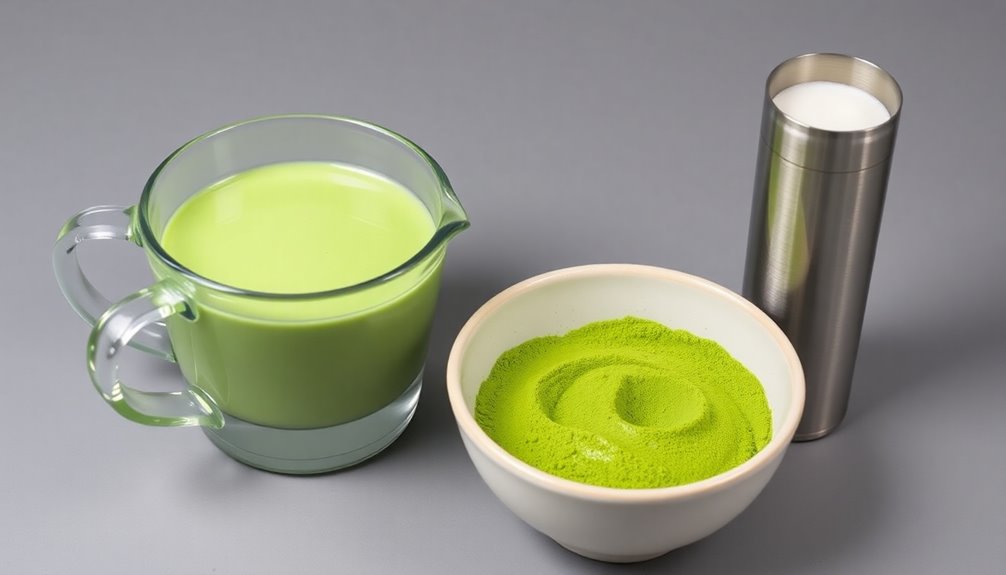
A classic matcha latte is a harmonious blend of earthy matcha powder, smooth milk, and optional sweeteners. This warm, frothy beverage not only delights the senses but also offers a range of health benefits, from a gentle caffeine boost to a wealth of antioxidants. Additionally, matcha is rich in antioxidants and nutrients, which can support overall wellness.
Preparing a matcha latte at home is a straightforward process that allows you to customize the flavors to your liking. To begin, you'll need to gather a few simple ingredients and tools. With a little practice, you'll be sipping on a homemade matcha latte in no time.
Ingredients:
- 1 teaspoon high-quality matcha powder
- 2 ounces hot water
- 8 ounces milk of your choice (e.g., dairy, almond, oat, coconut)
- Honey or alternative sweetener (optional)
Instructions:
Sift the matcha powder through a fine-mesh strainer to remove any clumps. Whisk the matcha powder with the hot water until a smooth, vibrant green paste forms.
In a separate container, steam and froth the milk until it reaches your desired temperature and consistency. Gently pour the frothed milk into the matcha mixture, stirring to combine.
For a creamier texture, you can also create a matcha paste by mixing the powder with a small amount of warm milk before adding the remaining milk.
Cooking Steps

Start by sifting the matcha powder to remove clumps.
Next, whisk the matcha in hot water until it's frothy.
Meanwhile, steam and froth your milk, then combine the matcha and milk, adding any sweeteners to taste.
Step 1. Whisk Matcha Powder in Hot Water
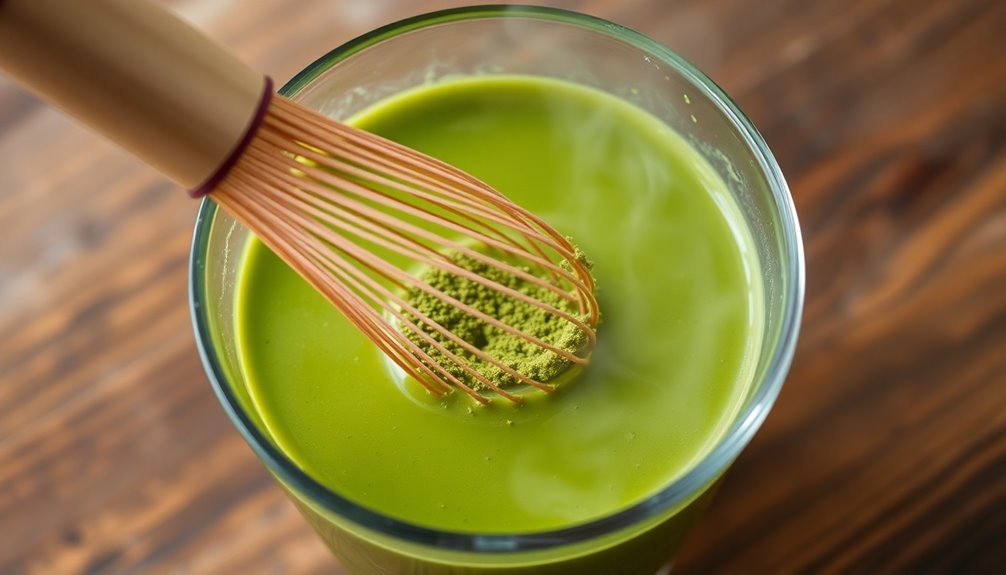
Begin by sifting 1 teaspoon of matcha powder into a bowl to eliminate clumps and ensure a smooth consistency.
Next, heat 2 ounces of water to about 175°F (80°C) to preserve the delicate flavors of the matcha while avoiding bitterness.
Use a bamboo whisk (chasen) to vigorously whisk the hot water and matcha in a zigzag motion until a creamy, frothy surface forms.
Keep whisking until the mixture is well combined and smooth, with no visible lumps of matcha powder remaining.
The result is a balanced energy boost and a traditional tea ceremony-inspired drink with a unique preparation process and impressive health benefits.
Step 2. Froth Milk With a Milk Frother
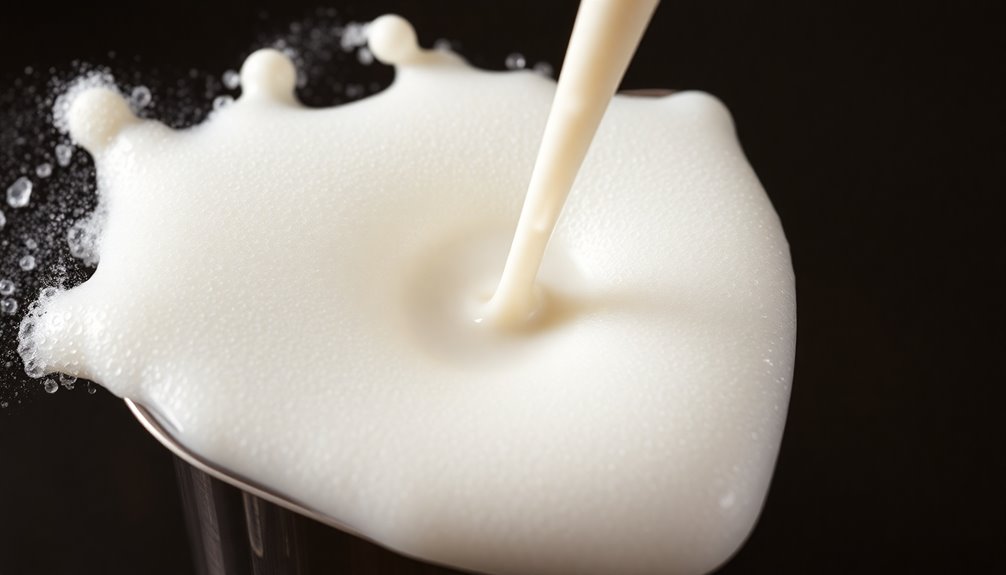
Now that you've prepared the matcha base, it's time to froth the milk to create a creamy and airy matcha latte.
Using a handheld milk frother, simply pour your desired amount of milk into a container, then insert the frother and move it up and down for about 30 seconds until the milk becomes frothy and velvety.
For best results, use whole milk or barista-style plant-based milks, as they tend to froth better.
Remember to heat the milk to around 150°F before frothing, as overly hot milk can affect the flavor and texture.
Finally, pour the frothed milk over your matcha mixture to create a beautifully layered latte or mix it in for a smooth blend of flavors.
Step 3. Add Sweetener to Taste

Though matcha has a naturally bold and slightly bitter flavor, you can easily tailor it to your preferred sweetness level. Start by adding a small amount of honey, maple syrup, or agave to your matcha latte, then gradually adjust to suit your taste.
Using healthier sweeteners can preserve matcha's health benefits while providing a satisfying flavor. The type of sweetener you choose can also impact the overall experience – honey offers a floral note, while maple syrup has an earthy richness.
For a less sweet drink, consider ceremonial-grade matcha, which is naturally sweeter and may require less sweetener to balance the unique flavor.
Step 4. Add Matcha and Milk

Start by sifting 1 teaspoon of matcha powder into a bowl to eliminate any clumps, ensuring a smooth blend when mixed with the liquid.
Next, heat 2 ounces of water to 175°F and slowly pour it over the sifted matcha while whisking vigorously with a bamboo whisk or frother until frothy.
Then, warm 8 ounces of your choice of milk, such as cow's, almond, or oat, until hot but not boiling, and froth it for a creamy texture.
Combine the matcha mixture with the frothed milk in a serving cup, stirring gently to blend the unique combination of flavors.
Optionally, sweeten your matcha latte with honey, maple syrup, or agave to enhance the natural flavors while keeping the health benefits in mind.
Step 5. Stir to Combine All Ingredients
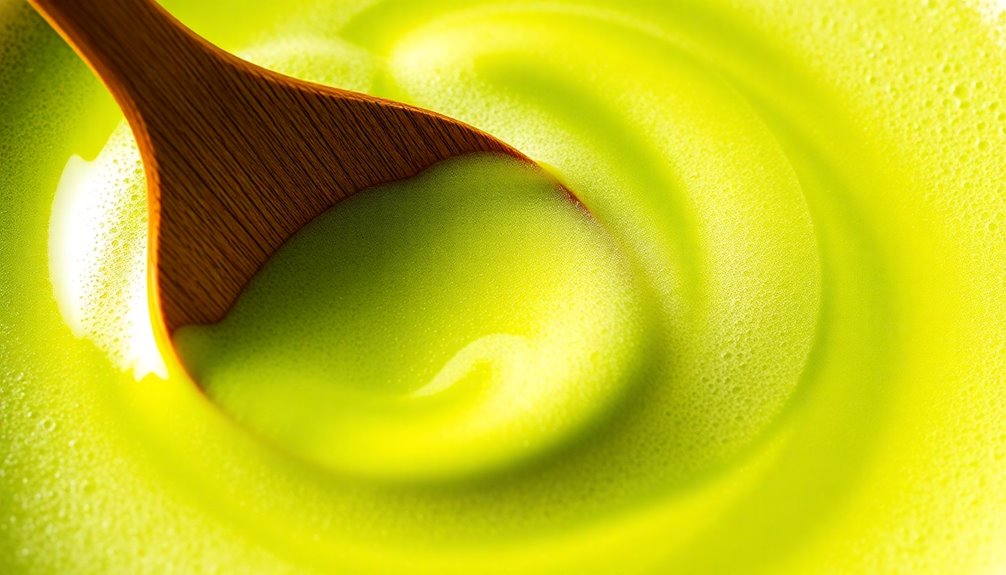
Gently stir the matcha mixture and frothed milk together until they're fully combined, creating a smooth, uniform texture and color throughout the drink.
The whisked matcha powder and hot water should seamlessly blend with the creamy, frothy milk, resulting in a cohesive matcha latte.
If desired, you can now add a touch of sweetness by stirring in a bit of honey or maple syrup, adjusting the flavor to your liking.
This final step ensures all the ingredients work in harmony, delivering a delightful latte experience with each sip.
The key is to take your time and gently combine everything for a perfectly blended matcha latte.
Final Thoughts

As you've explored, a matcha latte can be a delightful and beneficial addition to your daily routine.
The unique combination of caffeine and L-theanine in high-quality matcha provides sustained energy and improved mental clarity, while the antioxidants support overall wellness.
Experimenting with different milk alternatives and sweeteners allows you to customize the flavor and nutritional content to your dietary preferences.
However, being mindful of portion sizes and added sugars is crucial to maintain the health benefits without any negative effects.
Frequently Asked Questions
What Are the Benefits of Matcha Latte?
Matcha lattes are packed with health benefits!
They're full of antioxidants that fight free radicals, and the caffeine and L-theanine give you a calm, focused energy boost.
Plus, they can even help you manage your weight and improve your heart health.
Matcha lattes are also great for your digestive system and skin, thanks to their detoxifying properties.
Is It OK to Drink Matcha Latte Everyday?
Drinking matcha lattes every day can be great for your health, thanks to the powerful antioxidants and energizing blend of caffeine and L-theanine.
However, it's important to enjoy them in moderation to prevent issues like insomnia from too much caffeine.
Watch out for added sugars, too, as that can lead to weight gain.
Consult your doctor before making matcha lattes a daily habit, especially if you have any health conditions.
Does Matcha Latte Burn Belly Fat?
While matcha lattes can't directly "burn" belly fat, they may contribute to reducing it over time.
The catechins, caffeine, and L-theanine in matcha can boost your metabolism, curb cravings, and support your exercise routine – all of which are important for losing belly fat.
Just remember to enjoy your matcha latte in moderation and pair it with a balanced diet and regular physical activity for the best results.
What Are the Pros and Cons of Drinking Matcha?
Matcha has its pros and cons. Its antioxidants may help combat stress, but too much can cause insomnia or jitteriness.
The caffeine and L-theanine provide sustained energy and focus without a crash. However, adding sugary syrups to matcha lattes can undo its health benefits and lead to weight gain.
Conclusion
You’ve now learned all about the incredible benefits of matcha lattes, the different types to try, and how to make them perfectly at home. So why not give it a go? Matcha’s bold, earthy flavor and energizing effects will transform your daily coffee routine. Plus, it’s easy to customize – try adding honey, vanilla, or even a hint of cinnamon for a unique twist. Get sipping and enjoy this superfood sensation! And if you’re not ready to give up your coffee entirely, consider the benefits of using coffee in skincare. Coffee grounds make an excellent exfoliant, helping to remove dead skin cells and improve circulation. Additionally, the caffeine in coffee can help reduce the appearance of cellulite and tighten the skin. So whether you’re sipping on a matcha latte or treating yourself to a coffee-infused scrub, you can enjoy the benefits of both inside and out.
